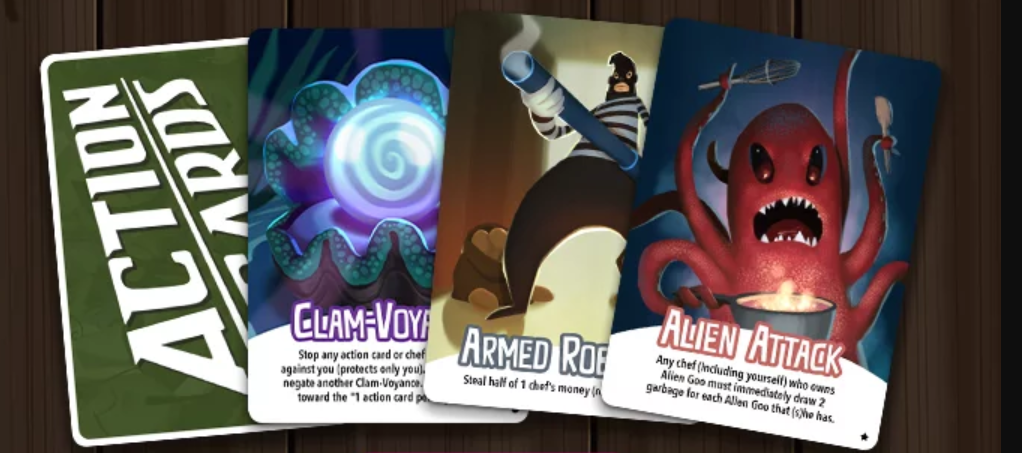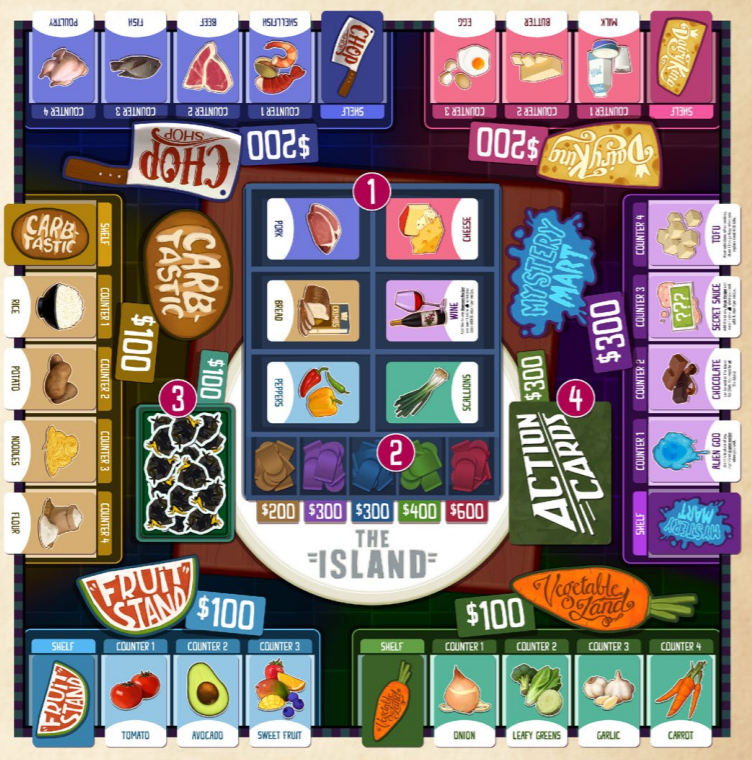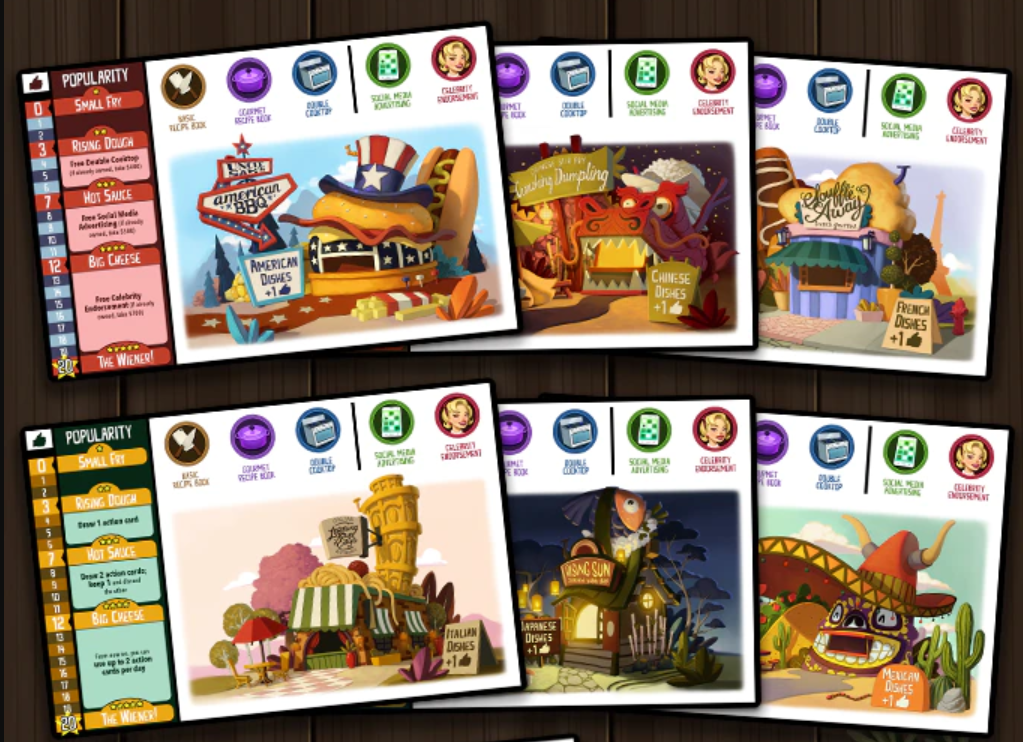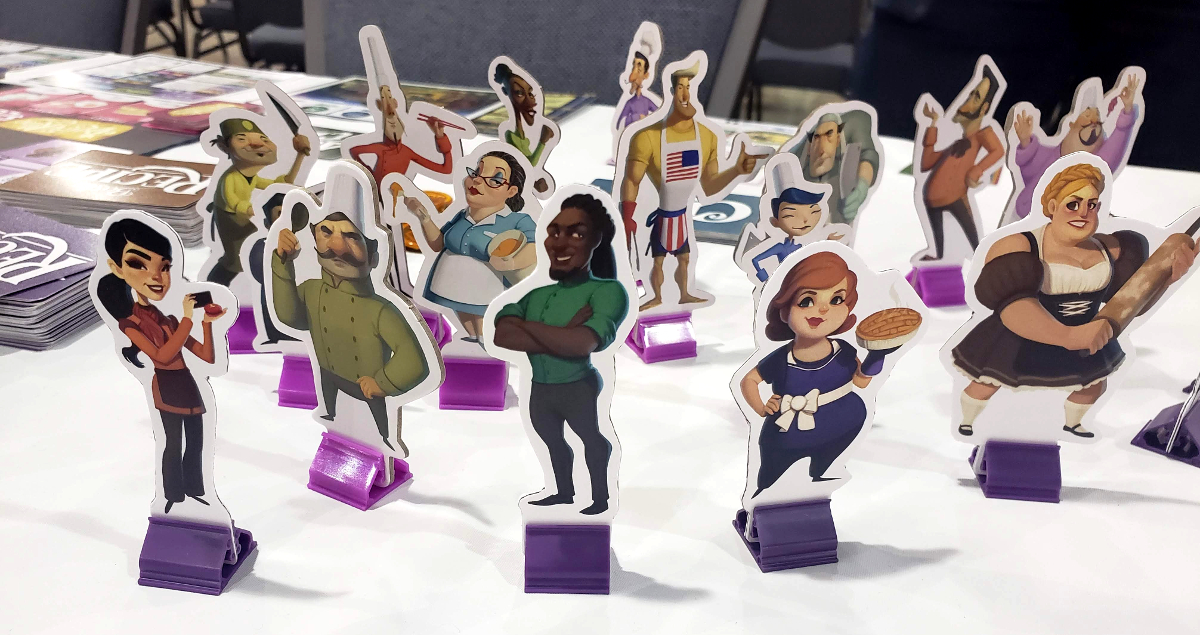As part of our December Spotlight on Rival Restaurants, we strive to inform readers of little extra tidbits surrounding the game. Games are made by people, and one of those tidbits we enjoy is learning a little bit more about the people behind them. Some designers shy away from the public stage, while others enjoy being front and center.
As we’ve pointed out numerous times in this showcase over the years, some of the most authentic, most enthusiastic experiences you can get with indie game designers are those whose very first passion project has come to life. It’s not just the exuberance of the game itself becoming a finished product, often coming at the tail end of many years of design, development, and manufacturing. It’s also the degree of genuine appreciation they have for those out there who helped make their dream a reality. It’s a hard thing to fake, and even if they go on to bigger and greater successes, there’s nothing quite like watching that initial lightning in a bottle experience – especially given that each designer’s emerge onto the hobby stage is incredibly unique.
All of this is on full display when speaking to Rob Chew, founder of Gap Closer Games and the co-designer of Rival Restaurants. What started off as a haphazard way to better spend their free time, Rob, along with Jon Kang and Gary Alaka dabbled with game design, spending several years tinkering with what would eventually become Rival Restaurants.
Driven by a desire to create a game that was both relatable and accessible to a wide range of individuals, their inaugural title features a wide range of mechanisms that all mix together like a nice salad while still possessing a decent dose of goofy humor.
Utilizing elements of negotiation, resource management, player powers, upgradable technologies, and realtime gameplay, Rival Restaurants is strangely somehow both straightforward and ambitious in the number of different elements all rolled up into a single game. We needed to know more about how all of that became the finished game before the community now. So between the holiday festivities and the Philadelphia convention known as PAX Unplugged, we edged in just enough time this month to chat with Rob directly on the company’s ethos, the game’s origins, and, you know, why he was so set on a food theme.
T’was a bit tricky, but we pulled it off, and today we share the majority of that conversation with you.
Enjoy!
Round One Questions
CR: What was your Gateway Game?
Settlers of Catan and Kings of Tokyo
CR: What was the last game you really enjoyed playing (besides Rival Restaurants)?
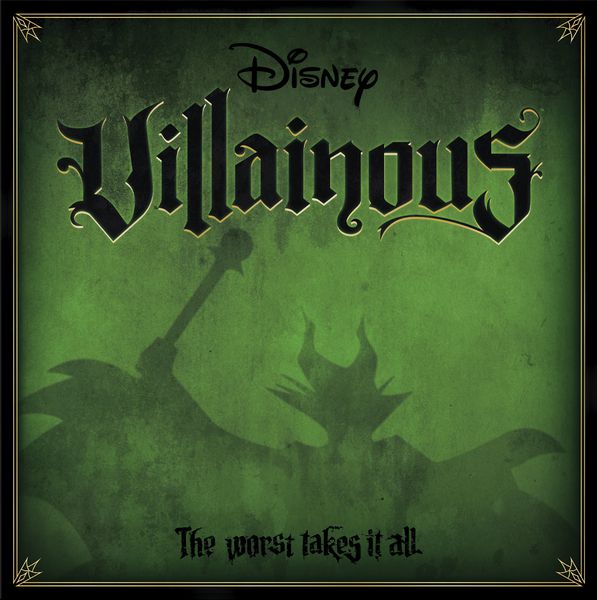 Villainous
Villainous
CR: How big is your game collection?
50-60 games
CR: What is your favorite type of game to play?
Whatever makes everyone happy. But if was playing with a bunch of clones of myself, something that is strategic, immersive, and has art that is enjoyable to look at. I love games that are asymmetric and have lots of replayability!
CR: How do you feel about Monopoly?
It’s a classic that my brother and I used to love playing as a kid. We created Mega Monopoly by joining Star Wars Monopoly, Pokemon Monopoly and normal Monopoly together. And I know we didn’t always play by the rules 🙂
On Rival Restaurants
CR: First off, we’re eager to know – what was the original recipe for the creation of this game? Because there are so many different ideas floating around Rival Restaurants that we can only guess how the entire concept came about and feel there’s a story here…
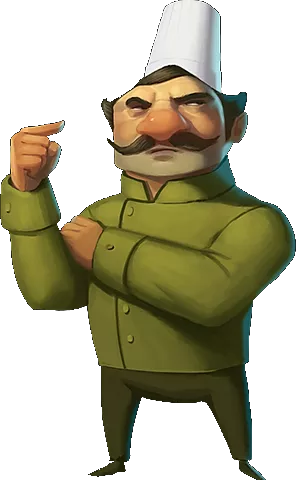 Fantastic question! So it all began when I was in college at UCLA back in 2011. I was a tennis instructor back then and I remember my friends wanted to hang out and watch sports on TV, but for me that was kind of like work. I wanted to hang out but not watch more sports so I thought to myself, “let’s do something that I’ll never have time to do again”. So I decided to make a board game. I made the first draft on the back of my college lecture slide notes for Marxist economics, used pennies and nickels for currency, and stored it in an old shoebox. I had no idea we’d be where we are today!
Fantastic question! So it all began when I was in college at UCLA back in 2011. I was a tennis instructor back then and I remember my friends wanted to hang out and watch sports on TV, but for me that was kind of like work. I wanted to hang out but not watch more sports so I thought to myself, “let’s do something that I’ll never have time to do again”. So I decided to make a board game. I made the first draft on the back of my college lecture slide notes for Marxist economics, used pennies and nickels for currency, and stored it in an old shoebox. I had no idea we’d be where we are today!
I really wanted to create a game that would foster and encourage human interaction and relationship building. Our company is called Gap Closer because we want to make games that help people “close the gap” in an increasingly digital world that is so often tied to screens. I wanted it to be a game that was accessible and that people could relate to. So I asked myself, “what is something that people dream of doing or sound like of fun but most people will probably not actually go forward with?” I picked restaurant ownership because everyone understands the basic concept of owning a restaurant. My wife and I love cooking, (which is a big part of how we got together), and that’s when food culture was really beginning to pick up more and more; I thought it would be a cool theme for a game.
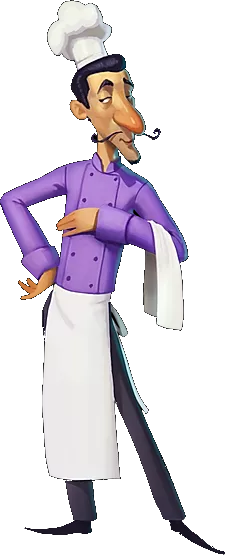 My Rival Restaurant teammates are all friends through church and college. I didn’t think the game would go anywhere, but my friend Audrey tried the game and asked if she could draw it for her art project. I didn’t think about it for a while, but then a few years later she came back and it looked amazing. We realized we had something special on our hands but didn’t really know what to do, and so for years not much happened, just edits and playtesting. Then our friend Jon tried the game and fell in love with it, and in 2017 we asked him to join the team. We then realized that we needed one more person and so we asked our friend Gary to join the team. In 2018, we launched our very first Kickstarter campaign with Rival Restaurants.
My Rival Restaurant teammates are all friends through church and college. I didn’t think the game would go anywhere, but my friend Audrey tried the game and asked if she could draw it for her art project. I didn’t think about it for a while, but then a few years later she came back and it looked amazing. We realized we had something special on our hands but didn’t really know what to do, and so for years not much happened, just edits and playtesting. Then our friend Jon tried the game and fell in love with it, and in 2017 we asked him to join the team. We then realized that we needed one more person and so we asked our friend Gary to join the team. In 2018, we launched our very first Kickstarter campaign with Rival Restaurants.
I wanted it to be a game that would look and feel like whatever theme we were trying to simulate.
CR: Not unlike many great meals, Rival Restaurants utilizes a number of different game mechanisms in various degrees (trade & negotiation, timed rounds, unique player powers, upgradable tech, etc.) but is baked together in a cohesive way. Were all of these elements present in the game’s original design? Were any added over the course of its development?
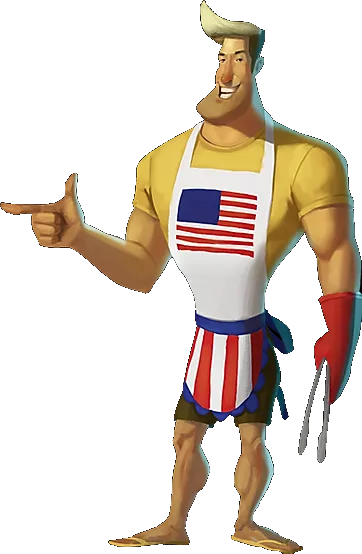 Unique player powers and restaurant upgrades were there from the very beginning, as well as trade and negotiation. The simultaneous realtime play during a timed round came about later when a friend said, “I know it sounds crazy, but do you think it would be possible for everyone to play at the same time, since it’s a cooking game?”
Unique player powers and restaurant upgrades were there from the very beginning, as well as trade and negotiation. The simultaneous realtime play during a timed round came about later when a friend said, “I know it sounds crazy, but do you think it would be possible for everyone to play at the same time, since it’s a cooking game?”
We originally had something called utilities, which became restaurant upgrades. The two income upgrades were originally a live band and a magician, but then it became social media advertisement and celebrity endorsement. I mean, when’s the last time you saw a restaurant with a live band, let alone a magician?
CR: Similarly, were there any elements of the game that you ultimately had to remove over the course of its creation?
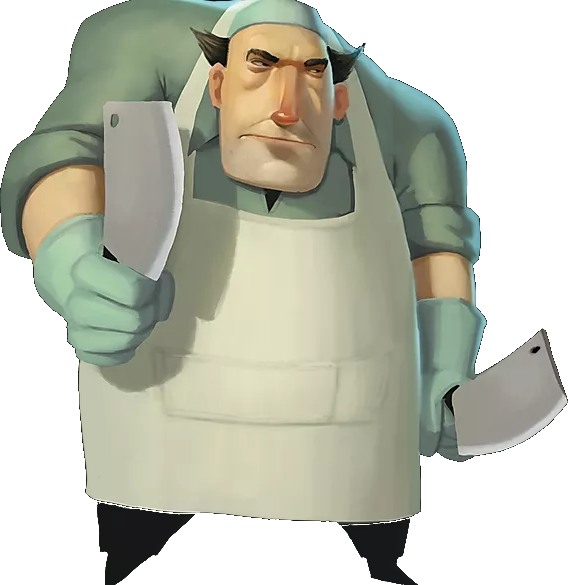 We originally had a mechanism called utilities, which required you to buy a utility in order to shop at a certain store. The idea was that you had to have a knife set to purchase items at the Chop Shop (meats) and a refrigerator to purchase from Fruit Stand or the Vegetable Store. We wanted to simulate the feel of a small startup restaurant that slowly moves up in the world but felt it was a little conceptually awkward (who in their right mind would own a restaurant without a refrigerator and a knife set??). I was sad to see it go, but it was ultimately without a doubt, the right decision for the overall gaming experience.
We originally had a mechanism called utilities, which required you to buy a utility in order to shop at a certain store. The idea was that you had to have a knife set to purchase items at the Chop Shop (meats) and a refrigerator to purchase from Fruit Stand or the Vegetable Store. We wanted to simulate the feel of a small startup restaurant that slowly moves up in the world but felt it was a little conceptually awkward (who in their right mind would own a restaurant without a refrigerator and a knife set??). I was sad to see it go, but it was ultimately without a doubt, the right decision for the overall gaming experience.
CR: One of the hallmarks of the game is each turn there is a mix between purchasing the ingredients you need from one location and trading/negotiating for the rest, creating an interesting dynamic of forced interaction for players to navigate. How did this particular part of the game develop?
Rival Restaurants was originally a turn based game with trading, much like Settlers. However, I realized that negotiating can take a long time and benefits the person slowing down the game without any real cost to them. So instead I chose to build a mechanism that would not only mimic the hustle and bustle of restaurant owning but would punish players for slow decision making, which is both true to real restaurant owning and something that I found to be rare in board games.
Because the negotiation phase is timed, you might end up making some bad decisions in the moment through a rushed trade or a moment’s indecision that could make you lose out on a long term gain, but that’s also true to real life. In real life, you don’t have unlimited time to make decisions – eventually you have to get in the kitchen and find a way to put some food on the table. This meant that this game favors a kind of strategy that is based on quick, shrewd decision making and creative business negotiations. I didn’t want a game about competitive restaurant owning to feel slow. I wanted it to be noisy, loud, yet calculating and sometimes cutthroat – since from what I hear, that’s what the restaurant world can be like.
CR: Beyond its gameplay, Rival Restaurants draws you in with its vibrant and diverse artwork, with each restaurant choice featuring characters of different food types and demographic backgrounds. What was the art direction process on a game like this, and how was is it determined which characters / restaurant owners made it into the base game?
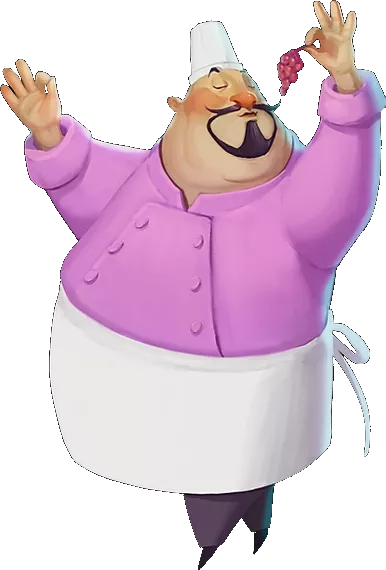 I created the characters by thinking of the silliest food puns I could, and then tried to playfully offend everyone equally. My team are all huge fans of Pixar and the art of Kings of Tokyo, so those were definitely influential in our art direction. But ultimately, Audrey drew the characters and restaurants from not much more than a name (and sometimes some creative suggestions). She’s amazing.
I created the characters by thinking of the silliest food puns I could, and then tried to playfully offend everyone equally. My team are all huge fans of Pixar and the art of Kings of Tokyo, so those were definitely influential in our art direction. But ultimately, Audrey drew the characters and restaurants from not much more than a name (and sometimes some creative suggestions). She’s amazing.
Most of our characters made it into the game, with the exception of one. (RIP Herbert). A number of the chefs and restaurants got name changes to be more clever or less blatantly offensive.
CR: Rival Restaurants possesses a comically irreverent streak throughout without going full-on satire. What was the process like for finding the game’s tone, and how did you know you had gotten it just right for the finished game?
We knew from the get go that we wanted this to be a family game. That meant that we wanted it to be easy to look at and with themes and art that would be enjoyable and appropriate for all ages. We studied and considered the components of successful family movies, books, shows, board games etc. and tried to apply that to ours. We really wanted to create a game that felt like an immersive environment so that players would be drawn into the world of Rival Restaurants. I personally think that a big help was writing back stories for all the chefs as well as their relationships, which really helped developed the comedic feel we were looking for in our game.
In terms of knowing when we had gotten it “just right”, it was a constant balancing act. We wanted to be self aware in our goofiness and over-the-topness that would hopefully draw out a good laugh. We wanted this game to be as relatable as possible. We didn’t want anyone to feel that their culture, background or demographic was ever being truly insulted or maligned or targeted, but we wanted to poke fun and get a good laugh out of caricaturing some of the different types of people we see in this world.
At the end of the day, Rival Restaurants is a game and we want it to be just that. Games are meant to be fun, so that’s what we tried to do at every level of development.
CR: Rival Restaurants did amazingly well on Kickstarter, especially for an inaugural game. With a number of disparate selling points, were you at all concerned about pitching to Kickstarter audiences prior to the campaign? What ended up being your greatest Kickstarter concern in the end?
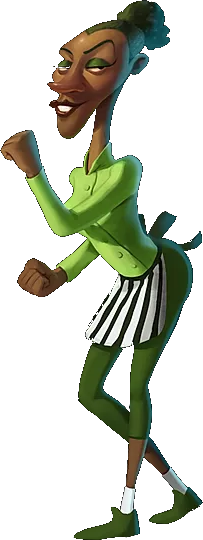 None of us were in the board game industry before. It was all new to us, so we really had no idea how our game would be received on Kickstarter. We felt good about the game, and the playtesting and feedback we had been receiving was very encouraging. But like any first timer, we did wonder if our game would get funded. Our greatest Kickstarter concern in the end, at least from my vantage point was, would we be able to fulfill to the general time frame and quality standard to all our backers and would people who had never met us be able to experience the same joy of Rival Restaurants without me or my teammates to teach them how to play.
None of us were in the board game industry before. It was all new to us, so we really had no idea how our game would be received on Kickstarter. We felt good about the game, and the playtesting and feedback we had been receiving was very encouraging. But like any first timer, we did wonder if our game would get funded. Our greatest Kickstarter concern in the end, at least from my vantage point was, would we be able to fulfill to the general time frame and quality standard to all our backers and would people who had never met us be able to experience the same joy of Rival Restaurants without me or my teammates to teach them how to play.
CR: Finally, although not a 1:1 translation, we’re getting a strong reality TV cooking competition vibe with Rival Restaurants. So…if you were forced to be on any reality TV cooking show, which would it be and why?
Cutthroat Kitchen, because it was my wife and I’s favorite cooking show to watch! We love watching the chefs scramble to pull out amazing meals even when they have to deal with all kinds of wacky twists, like having to make cooking appliances out of aluminum foil, cooking over a campfire, or having to swap all their protein for gas station turkey sandwich meat. It looks like a lot of fun!
Given that the true inspiration behind the creation of both Rival Restaurants and the publishing company alongside it were done with the intent of crafting titles that are able to cast as wide a net as possible, we’ll keep this section short and just state that we find it a laudable goal. With a number of different mechanics all carefully blended together, a playful theme, and a playtime of about an hour, it seems like the game has all the right ingredients to succeed at its goal. The game may be lightweight, but there’s still plenty to digest, either in terms of strategy, its diverse artwork, or anything in between.
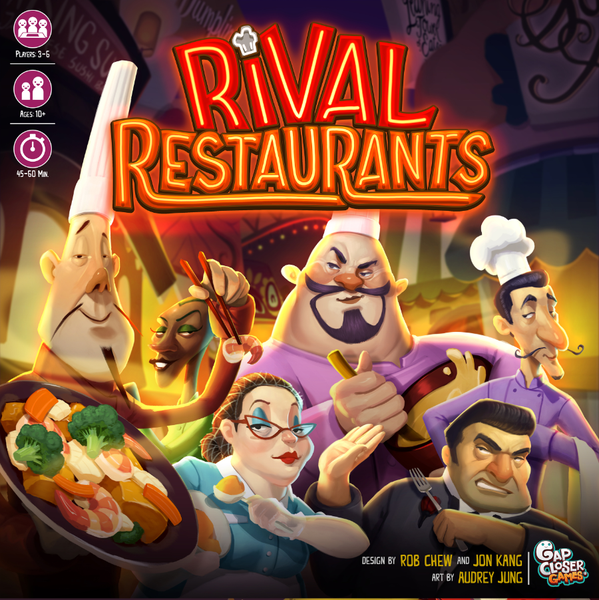
Given that we are closing in on the final days of 2019, then, it only seems fitting to take the game’s food theme and run with it. In this case, by providing a lucky person with one final holiday treat in the form of a copy of this competitive culinary game!
Cooking Up A Holiday Feast: A Rival Restaurants Giveaway
Photo Credits: Rival Restaurants cover and photos by Gap Closer Games.

